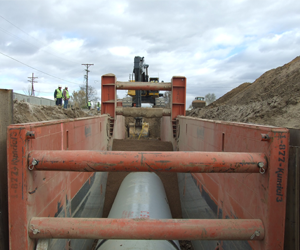Constructions sites are loaded with potential hazards, and trenches make up a large portion of accidents. Trench workers must take vital precautions before and during their work, and foreman should make sure that their trenches are as safe as they can possibly be.
Trenches are used for a wide range of purposes, so they vary greatly in shape, size, and even lifespan. In this post, we are focusing on trenches that are 5 feet deep. These are relatively shallow compared to some of the more drastic trenches, but are they any safer?
The safety of any particular trench is dependent on a variety of factors, but there are several things that remain consistent, no matter how deep it is. Let’s examine the common 5-foot trench to see just how safe it is.
Cave in Potential
Even at only 5 feet deep, there is still a possibility that the trench could cave in. And even if it sounds like it won’t be too bad, these sized trenches have seen plenty of fatal cave ins. The earth surrounding the trench can get heavy very fast, and if you aren’t expecting it, you can find yourself underneath it in a matter of seconds.
Exposure to Elements
A 5-foot trench has to withstand the same weather and external issues that deeper trenches do. This means that it is subject to the hazards that come along with inclement weather. Wet earth can make for plenty of slips and falls, and changes in temperature can lead to collapses in certain parts of the trench or of the entire trench.
Other Common Hazards
Despite a lower depth, 5-foot trenches are not immune to other common hazards experienced in deeper trenches. This means that workers may still be exposed to noxious gases, water accumulation, and contact with buried service lines.
All of these potential hazards suggest that 5-foot trenches may not be as safe as you might think. Due to their scale, they clearly are not as dangerous as 20-foot trenches, but there are still plenty of reasons to take all of the necessary precautions before working in a 5-foot trench.
Even trenches less than 5 feet deep need to be surveyed by a professional before they can be deemed safe. OSHA dictates that anything 5 feet or deeper must be fitted with a protective system such as sloping, shielding, and shoring as well as the use of ladders and steps.
How to Improve Trench Safety
Because 5-foot trenches can be dangerous, it is important that you take all safety measures available. OSHA regulations don’t always require additional protective equipment like trench boxes, but they can make a world of difference, both for the safety of your workers and the efficiency of the work being done.
Kundel offers a wide range of high-quality trench boxes that can be used for a variety of applications. If you are serious about providing your workforce with the safest environment, consider a trench box for your next project.

